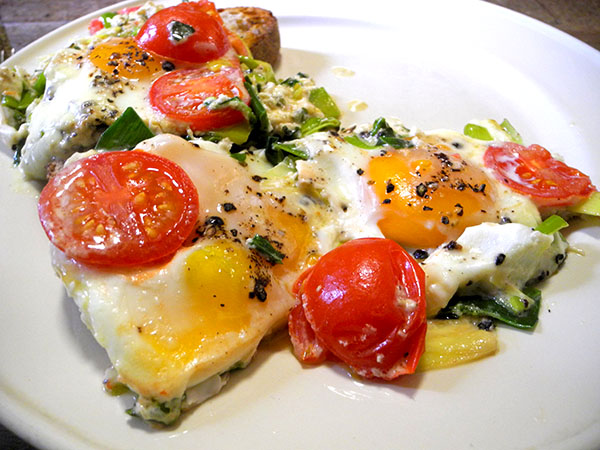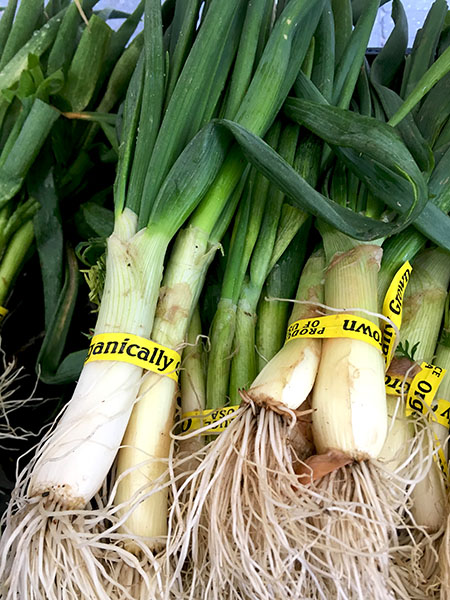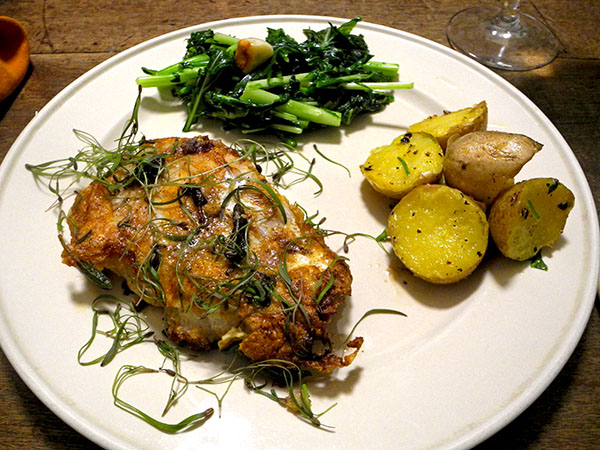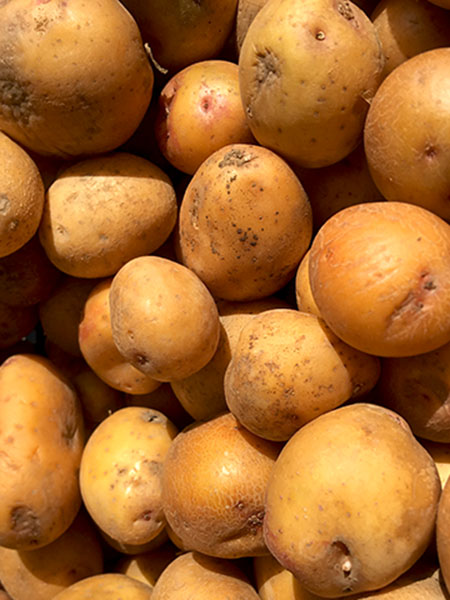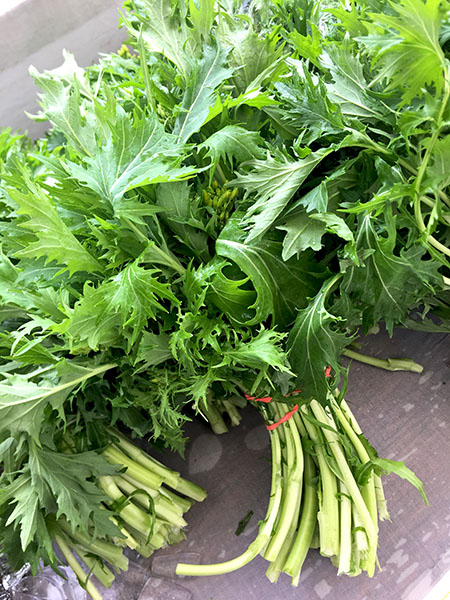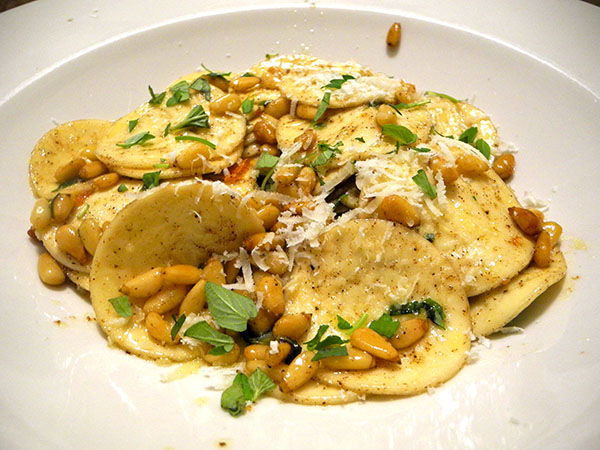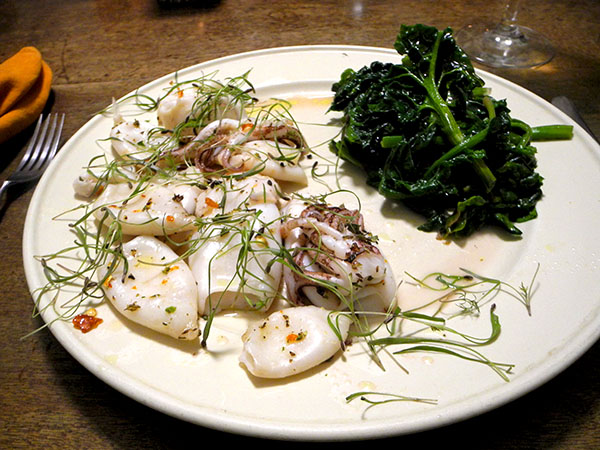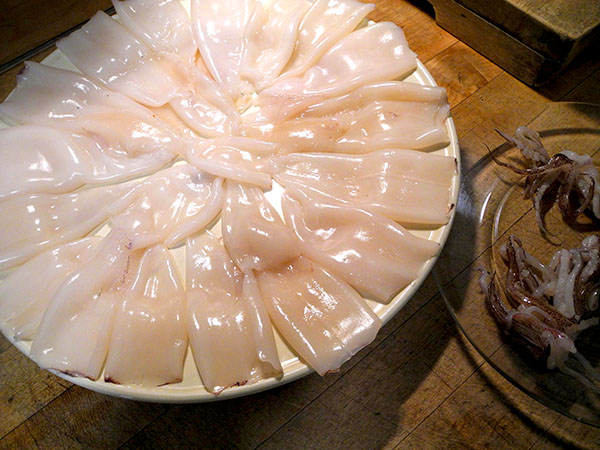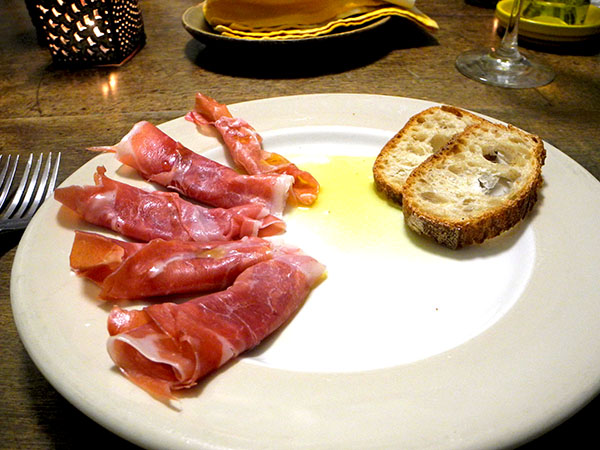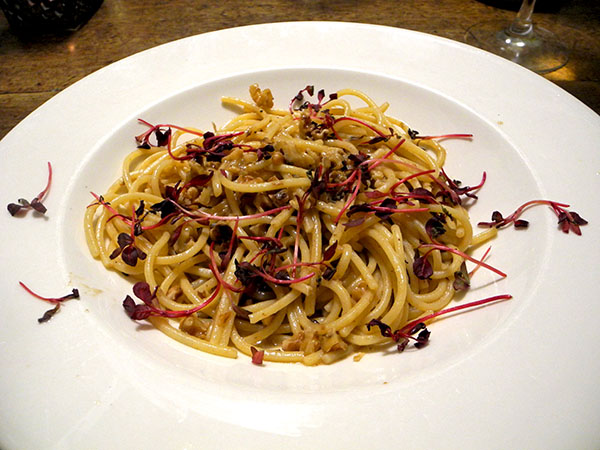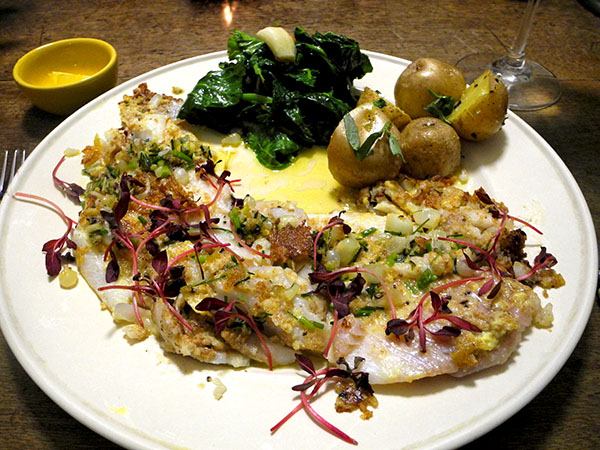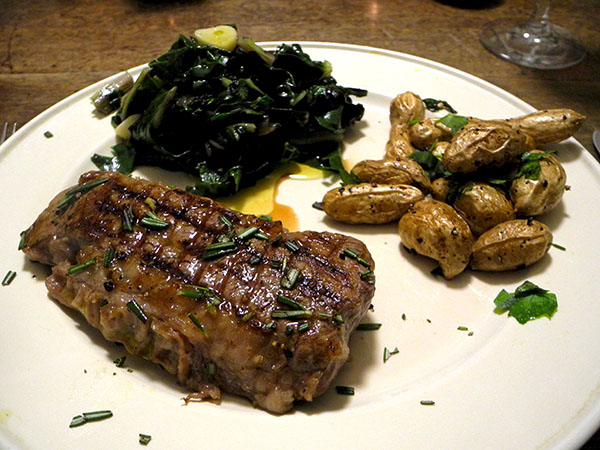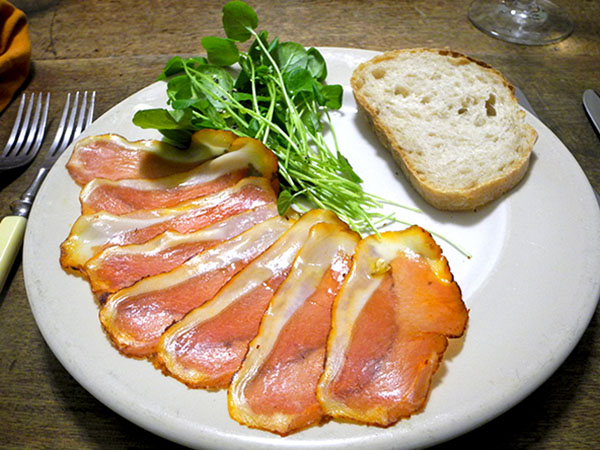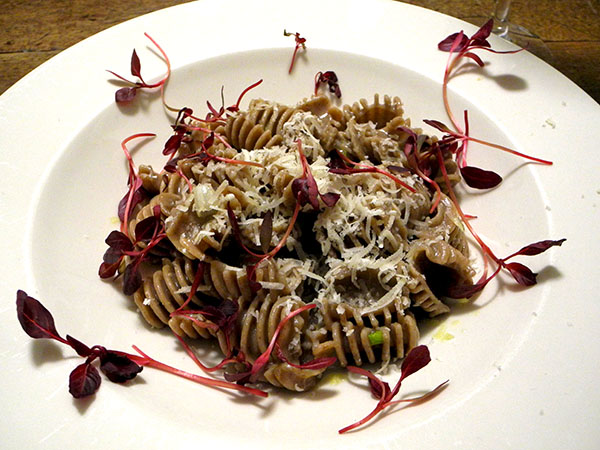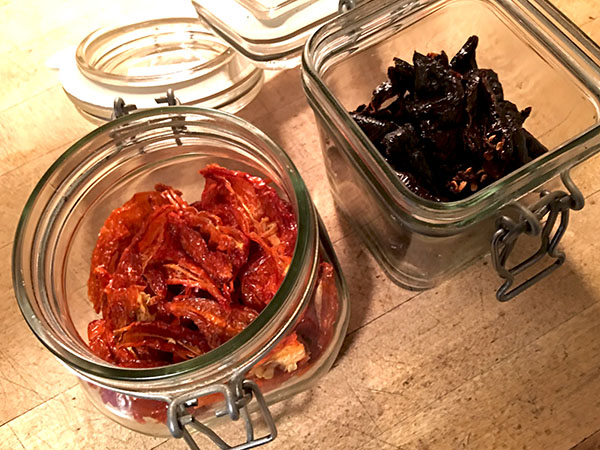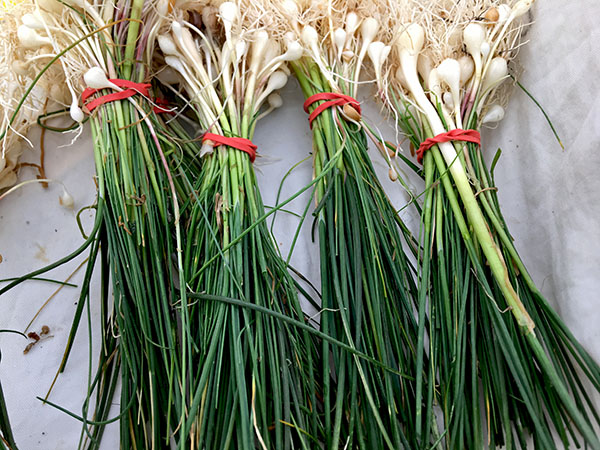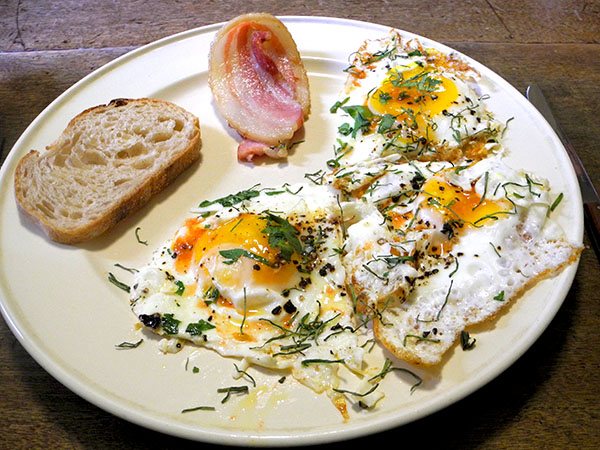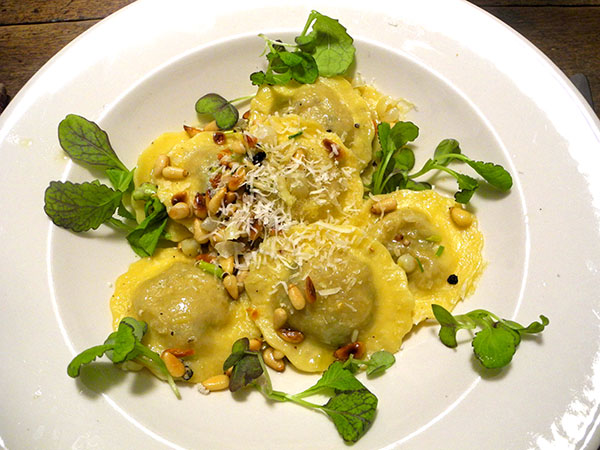
I usually keep a package of a frozen filled pasta on hand for those nights when I had not expected to be making any dinner at all, but then plans changed.
This was not one of those times. Instead, preparing the ravioli was a deliberate choice by which I managed to occupy the space between 2 more elaborate meals with friends, one as guests in another home, and one in our own.
Almost a night off.
- almost 2 tablespoons of olive oil heated slowly inside a large high-sided tin-lined heavy copper pan with a crushed piece of orange-gold habanada pepper, and a handful of wild garlic bulbs from Lani’s Farm, nothing allowed to fully cook, seasoned with sea salt and freshly-ground Tellicherry pepper, a handful of pine nuts added after they had been slowly heated and browned inside a small well-seasoned cast iron pan (I became distracted and briefly lost track, so they went farther than I had intended, but in fact were delicious accompanied by some other strong flavors), a 10-ounce package of frozen Rana portobello-mushroom-and-ricotta-filled ravioli from Eataly, which had been boiled inside a large pot of well-salted water for 2 minutes, then drained, slipped into the copper pan and mixed well with the garlic-habanada sauce, everything stirred together over a low flame with some of the reserved pasta water in order to emulsify the liquid, the pasta then arranged inside 2 shallow bowls, olive oil drizzled on top, and around the edges, a little Parmigiano & Reggiano Bonat 5 anni from Buon Italia grated over the center, some micro red mustard from Windfall Farms artfully arranged [sorry, but I do try] around the border of the pasta
- the wine was a California (Sonoma) red, ROX Scott Peterson Pinot Noir Sonoma Coast, from Naked Wines
- the music was Haydn, his Symphonies Nos. 12, 60, and 70 (written between 1763 and 1774), Giovanni Antonini conducting Il Giardino Armonico
